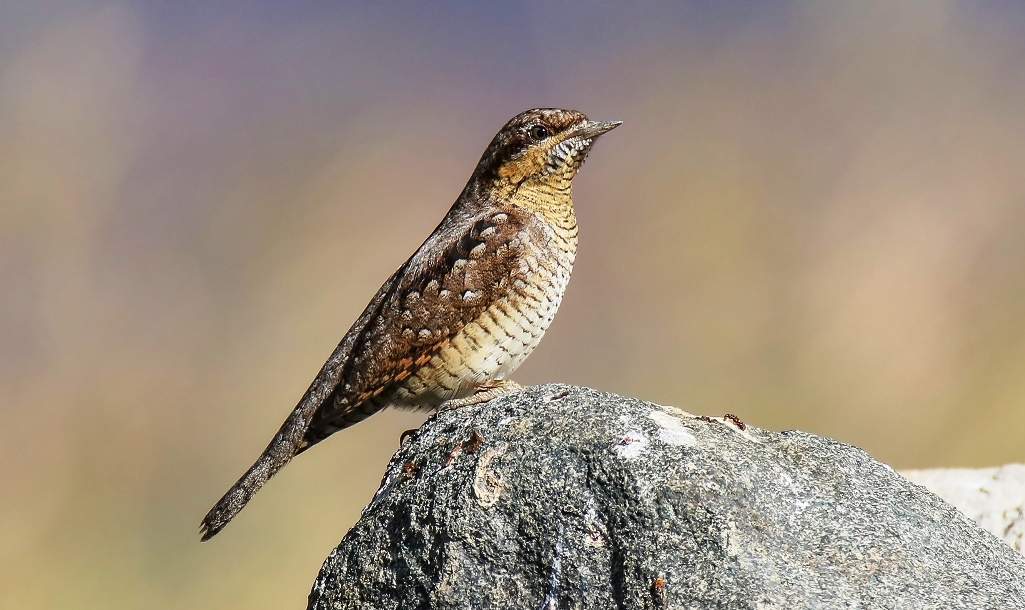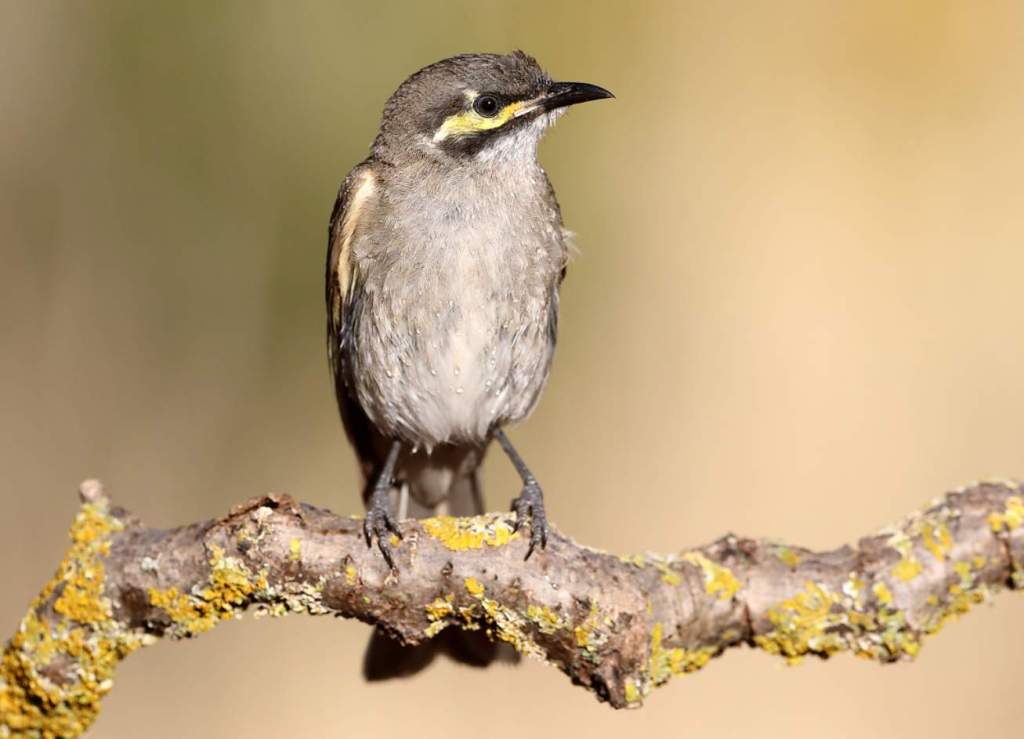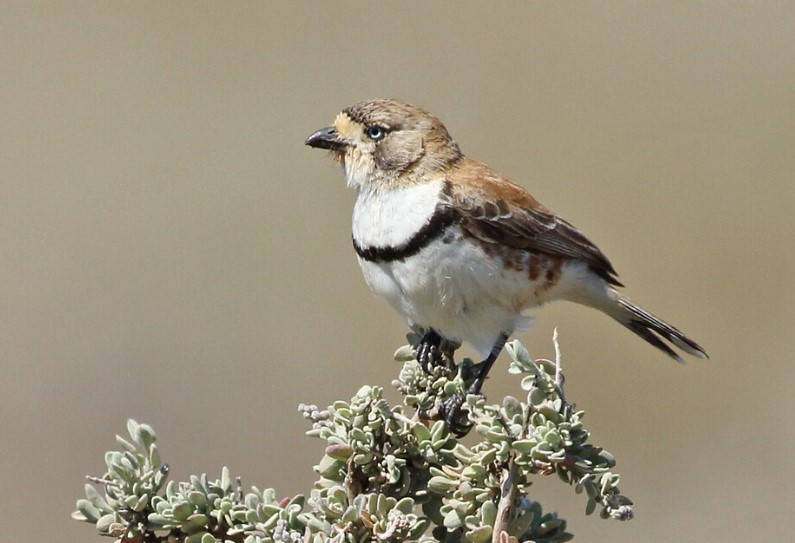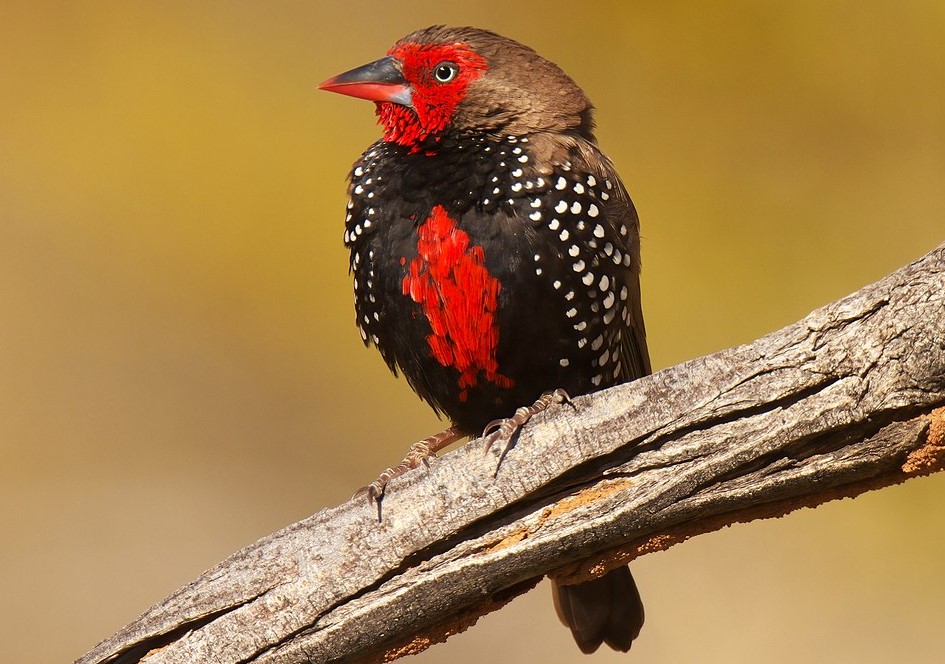Facts of Eurasian Wryneck
-
The Eurasian Wryneck (Jynx torquilla) is approximately 16 to 17 cm in length and has a wingspan of between 25 and 27 centimeters.
-
This is a small, aberrant woodpecker and a most curious bird, looking and behaving much more like a smallish passerine than a woodpecker.
-
It resembles a large warbler, a small shrike, or even a small, slender thrush with brilliantly vermiculated, cryptic plumage (in a poor view, it looks rather uniform greyish-brown); however, it has a relatively small head and small bill and a relatively long, rather soft tail.

Facts of Eurasian Wryneck call is often revealing presence for the first time, a repeated clear, ringing but plaintive ‘queequee- quee-quee-quee’. Photo credit: Imran Shah -
The short legs are the only woodpecker-like feature. It is unmistakable at close range, when its almost nightjar-like plumage pattern and color can be seen well, but at a distance, it tends to be identified more by elimination than by anything else.
-
Rather lacking in obvious plumage features from any distance, but from above and behind, dark brown bands bordering the crown, extending from the center of the nape to the mantle and along the edge of scapulars, stand out in good light. It does not clamber up tree trunks (although it occasionally clings to trunks) and drums only softly by tapping on a branch.
-
The Eurasian Wryneck is shy, unobtrusive, and rather sluggish, often staying hidden in trees or bushes but sometimes feeding on the ground, hopping about with its tail slightly raised.
-
The bird habitually sits quietly for long periods on branches or overgrown walls.
-
When pressed, it defends itself by fanning its tail, erecting crown feathers into the short crest, extending its neck, and twisting and turning its head from side to side (hence its vernacular name).
-
Eurasian Wryneck flight is low and somewhat undulating, with fairly long glides on partly closed wings, usually over comparatively short distances between trees or bushes.
-
The juvenile Eurasian wryneck very closely resembles an adult at any distance but is a little duller and browner.
-
It has a crown and hind neck browner, less grey, with more obvious dark and white barring, a less well-defined black area from hind-neck to mantle, and feathering of the back, rump, and upper tail coverts soft and loose with creamy-white ground coloration and some narrow dark barring (instead of tight grey feathering with fine dark speckling).
-
The ground color of the tertials and outer scapulars is warmer (rufous-cinnamon), and less gray. Also, some cream spots on the tips of longer wing coverts were less well defined.
-
Throat, upper breast, and flanks are less rich buff, dark barring paler (gray rather than black), and less sharply defined. The bird tail is more pronounced black barring.
-
The call of the Eurasian Wryneck is often revealing presence for the first time, a repeated clear, ringing but plaintive ‘queequee- quee-quee-quee’ (each unit falling in pitch at the end). Therefore, it is a much stronger and more metallic sound, more plaintive than the similar call of the Lesser Spotted Woodpecker. It is recalling the common kestrel or Eurasian hobby.
-
It is pretty widespread; however, it is decreasing locally. Apart from the range that is mapped, it is currently the sole irregular breeder in Britain, was previously widespread, and has bred Mallorca.
-
It spends most of the winter south of the Sahara woodland (with edges and clearings, favoring broadleaved but also found in coniferous), open woodland, orchards, parks, and large gardens. Outside breeding season, also in the scrub.

Facts of Eurasian Wryneck is approximately 16 to 17 cm in length and has a wingspan of between 25 and 27 centimeters. Photo credit: Rawpixel






